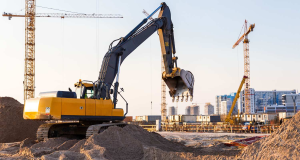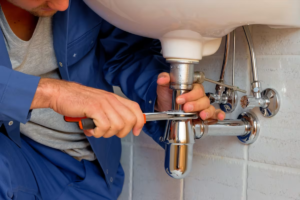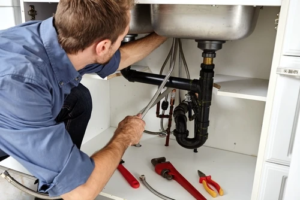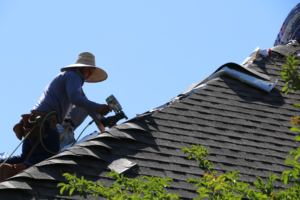Foundation repair methods range from temporary patching to structural reinforcement. Each option has its own set of benefits and drawbacks.

The right method depends on the extent of your home’s damage and what’s causing it. Evaluate your options carefully, and consult with a trusted contractor for personalized advice. Contact GK Construction Solutions for professional help.
Foundation cracks can feel like the boogeyman of homeownership-one day you’re admiring your well-kept home, and the next, a series of creeping cracks appear in your foundation walls. Fortunately, while these cracks are a cause for concern, they’re usually not catastrophic and can be repaired with relative ease. The trick is to catch them early, which can save you a lot of headache down the road.
Cracks can develop for a variety of reasons. The soil around your foundation settles, water can seep through concrete walls, and expansion and contraction stress can weaken the concrete. These stresses are the result of hydrostatic pressure, which results from excess moisture trying to push outward through your foundation walls. Hydrostatic pressure is often a sign of serious structural issues, and if left untreated, it can lead to severe cracks and costly damage.
When it comes to repairing cracks, the first step is locating them and creating a work area where your contractor can carry out the repair process. Then, it’s time to clean the cracks and clear away any debris. For wide cracks, it’s a good idea to use a hammer and chisel to slightly widen the crack and undercut the edges to facilitate patch adhesion.
Once the cracks have been cleaned and prepped, a masonry patch is used to fill the cracks and seal them against moisture. Hydraulic cement, vinyl concrete, epoxies, and polyurethane are commonly used sealers, but the choice will depend on the specific needs of your crack. After the cracks have been filled, backer rod is inserted to keep the repair material in place. This is especially important for horizontal cracks, which can cause structural problems.
Underpinning
Underpinning involves enlarging a foundation’s footings so they reach down to more load-bearing competent soil. Helical piers and push piers are then driven into these deeper footings, pinning them into place like giant needles that keep the foundation safe from future upheaval.
When soil moisture conditions change dramatically, a house’s foundation can shift and sink. This is particularly common in Central Texas, where heavy rains saturate the soil, causing it to expand, and prolonged droughts dry it out, leading to contraction. This can cause sections of a home’s foundation to sink lower than others.
In order to correct the sinking, a contractor may need to underpin part of the structure. However, it’s important to have a structural engineer inspect the problem and plan the underpinning solution carefully. A structural engineer can recommend independent soil tests to determine the right depth, diameter and spacing for a foundation underpin solution.
The goal of underpinning is to transfer the full weight of a building to its more stable underground footings. This requires careful planning, as some methods of underpinning can actually do more harm to a building if they’re done improperly.
One example is when a contractor digs very close to a foundation and accidentally cuts into its cone of soil support. This can result in the loss of the foundation’s bearing capacity and even collapse the building if the soil isn’t replaced. Other problems that can cause a foundation to need underpinning include soil damage caused by water infiltration or freeze-thaw cycles, poor initial construction practices, and natural disasters such as earthquakes, floods and tornadoes.
Piering
For homes with slab on grade foundations (a concrete slab that sits directly on the ground), piers can be used to support them. This is especially important if poor drainage or hydrostatic pressure from the soil builds up underneath your home, pushing against it and causing it to shift and crack.
If you notice flaws developing along your framing or drywall seams, it could be a sign that your foundation is shifting. However, it’s often not a top indicator of foundation problems since these kinds of flaws are frequently caused by other factors like temperature, rain, humidity, indoor vs. outdoor conditions, and more.
The best way to determine if your foundation is shifting and if it’s time for a pier repair is to call in a professional. These experts will examine your foundation for signs of movement and then recommend the right solution to fix it.
There are two main types of piers: the pressed piling method and the steel-and-bell-bottom pier method. The pressed piling method is quicker and less expensive but might not offer as much durability in the long run. The steel and bell-bottom pier method is more expensive but provides better quality and longevity.
Depending on your home’s location and the type of foundation, piering can take from a few days to a few weeks. During the process, the contractors will need to access your yard, so it may be necessary to move any items out of the way. The construction will create some noise and vibrations, so you might want to ask your contractor if you can still live in your house during this time. If not, you’ll need to find accommodations elsewhere while the work is being done.
Repairing Concrete Piers
Piers are a popular choice for foundation repair because they don’t require digging underneath the house like underpinning. This allows them to be more easily installed while minimizing disruption to home life. They also help prevent damage by addressing the underlying cause of shifting, cracking, and other structural problems.
Concrete piers can be used in various soil conditions and can be adapted to support different loads. They can also be reinforced with steel to improve stability and durability. Choosing the right method depends on the extent of the damage and the location of the piers.
Some of the most common signs of a damaged pier and beam foundation include visible cracks in walls, floors, or door frames, and sagging or uneven floors. It’s important to have these issues repaired promptly to avoid further damage and maintain the value of your home.
If you have a wood-frame pier and beam foundation, your beams or joists may need to be replaced due to wood rot, termite infestation, or other problems that compromise the strength of the structure. Replacing damaged joists and beams with new ones helps ensure that the foundation remains stable and improves its longevity.
Depending on the scope of the repair and the severity of the damage, the process can take anywhere from a few weeks to several months. The timeframe depends on factors such as weather, availability of materials, and access to hard-to-reach areas. A professional contractor will be able to provide an accurate estimate of how long the project will take. This can be a big factor in determining whether you want to attempt DIY repairs or call in the experts. Proper assessment, professional installation, and regular inspections can help you preserve your pier and beam foundation for decades to come.
Repairing Steel Piers
In addition to repairing cracks, foundation repair contractors often install piers or pilings to stabilize the foundation of your home. The type of support chosen depends on the soil conditions around your home and how much the foundation has settled or sunk.
Concrete piers transfer the weight of your home to stable soil or bedrock deep beneath the surface, bypassing unstable earth layers. They work well in areas that don’t experience major shifts in soil and are a cost-effective option for many homeowners. However, concrete piers can break down and fail due to soil conditions and moisture content, so they aren’t the best choice for areas with unstable or sandy soils.
Steel push piers and bell-bottom piers are more durable options that can be installed in homes with more severe foundation issues. These piers are driven into the ground using hydraulic jacks until they reach bedrock or stable soil, providing substantial stability for your home. They are also known for their longevity, allowing them to withstand a variety of environmental damage and heavy loads.
Helical piers, or screw piles, are a less intrusive alternative to steel piers that offer a similar level of stability for your home’s foundation. This method involves twisting large, screw-like shafts into the ground to stabilize your foundation. The installation process requires minimal excavation and disturbance of the soil around your home, and it can be performed while your house is still being used.
Regardless of which type of support is used in your foundation repair, it’s important to choose a contractor with the experience and expertise necessary to ensure the results last. A reputable repair company will use a proven, patented system to provide long-term stability for your foundation. Choosing a quality contractor can protect your investment, save you time and money, and help you enjoy peace of mind about the safety and security of your home for years to come.








